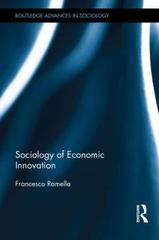Please help
QUESTION 6 The goal of this question is to model Emission Fee vs CapandTrade. We use a setting with 2 polluters although the main intuitions can be generalised to any number of polluters. We first analyse the Emission Fee approach, defining the optimal fee and how the system rewards more efficient rms. Then we move to the CapandTrade approach. Finally, we compare the two approaches. Which one is more efficient? Which one is preferred by the polluters? The model helps us answer these questions. {Note: this question is automatically graded. The system checks whether your answer matches the entered by the instructor. When asked to pick between YIN/U, enter only one letter in capital format: Y or N, don't enter Yes or No, or Uncertain. When asked to enter a value only enter the number. for instance 5. Don't enter 5 units, or 5 cereal bars, 5$, etc} Suppose that two firms emit a certain pollutant. The marginal cost of reducing pollution for each firm is as follows MC1 = e'l (firm 1) M02 = 4 e2 (firm 2) where e1 and e2 are the amounts (in tons) of emissions reduced by the first and the second firm, respectively. Assume that in the absence of government intervention each firm generates 80 units of emissions (160 in total). Answer the following: 1. How much would the 2 firms reduce pollution if there was no government intervention? e1+e2= 2. Suppose regulators decide to reduce total pollution by e*=100. What would be society's total cost of reducing pollution by e* if the regulator imposed that both firms reduce emissions by the same amount, that is e1 =e2=(e*/2). {Hint: Remember that the Total Cost can be computed as the sum of Marginal Costs} Total Cost: 3. What emissions fee (per unit of emission) should be imposed to achieve the cost effective outcome? Fee: 4. What would be society's total cost of reducing pollution by e\" if we implement the emission fee? [Hint: Remember that the Total Cost can be computed as the sum of Marginal Costs) Total Cost: 5. How much would the two firms pay in emission fees (total amount=unit fee * amount polluted)? Total fee firm 1+ Total fee firm 2: 6, Suppose that instead of an emission fee, the regulatory agency introduces a tradable permit system and issues 60 permits, each of which allows the emission of one unit of pollution. All the permits are allocated to firm 1. How many permits, if any, are bought by firm 2 from firm 1'? (Remember that both firms are generating 80 units of emissions each (160 in total) to begin with.) Bought permits by firm 2: 7. is it true that in this setting Capand-Trade is more efficient than Emission Fee? [U=Uncertain) (YIN/U) 8. if the governmentwas undecided between the Emission Fee versus the Cap-and-Trade system, is it true that firm 2 would lobby to implement Cap-and-Trade? {Hint: think carefully. U=Uncertain} (YIN/U) 40 points Save







